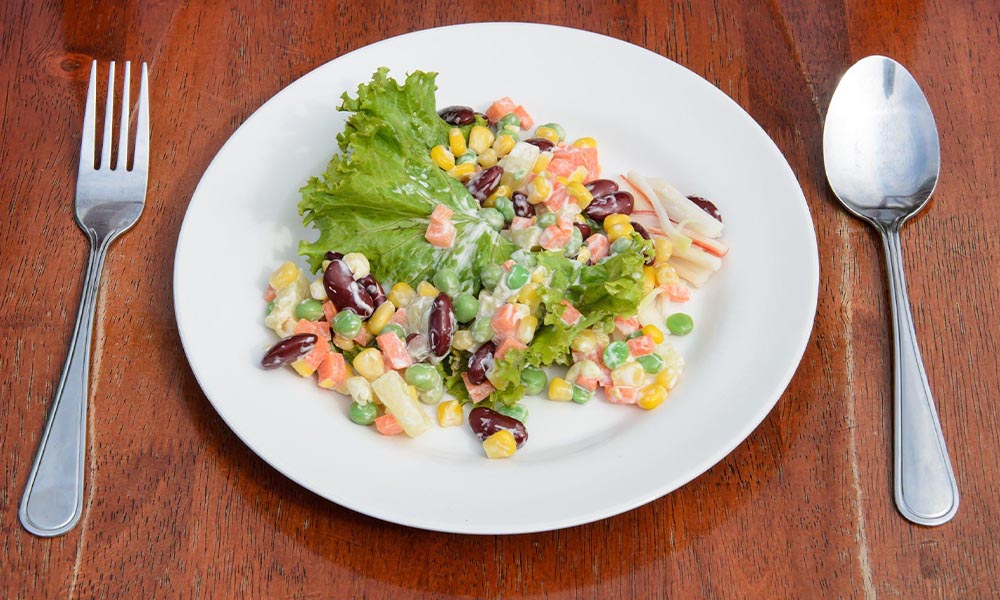In the world of nutrition, there are certain dietary patterns that have stood the test of time. One such pattern is the Three Sisters diet, which revolves around the combination of three key ingredients: corn, beans, and squash. This diet has been practiced for centuries by Native American communities, and it continues to be hailed for its nutritional benefits and sustainability. In this comprehensive guide, we will explore the power of the Three Sisters diet, uncover its nutritional benefits, and provide you with delicious recipes to incorporate these ingredients into your daily meals.
Table of Contents
ToggleThe Three Sisters: Corn, Beans, and Squash

The Three Sisters – corn, beans, and squash – form the backbone of the Native American diet. These ingredients are not only delicious but also work synergistically to provide a wide array of essential nutrients. Let’s take a closer look at each sister and the nutritional benefits they offer.
Corn: A Versatile Staple
Corn, the first sister, is a versatile and nutrient-rich grain that has been a dietary staple for centuries. It is a great source of fiber, niacin, phosphorous, potassium, and vitamin A. Fresh corn, especially when bought from local farm stands or farmers’ markets, is known for its exceptional taste and nutritional value. Opting for organic corn whenever possible ensures that you are getting the most out of this delicious ingredient.
Beans: Powerhouse of Protein and Fiber
Beans, the second sister, are nature’s powerhouse of protein and fiber. Whether it’s kidney beans, pinto beans, black beans, or garbanzo beans, they are all low in calories and high in essential nutrients like vitamin A, vitamin C, calcium, and iron. Just one cup of cooked kidney beans provides a significant amount of fiber, protein, and manganese, a mineral essential for energy production and antioxidant protection.
Squash: The Nutrient-Rich Guardian
The third sister, squash, adds a burst of flavor and nutrition to the Three Sisters diet. Whether you choose pumpkin, butternut squash, or acorn squash, you are in for a treat. Squash is rich in beta-carotene, calcium, magnesium, vitamin C, folate, and vitamin E. It also offers high-quality, low-glycemic-load carbohydrates, making it an excellent choice for those looking to maintain stable blood sugar levels.
The Nutritional Benefits of the Three Sisters Diet
The Three Sisters diet is more than just a combination of delicious ingredients; it is a nutritional powerhouse. By incorporating corn, beans, and squash into your meals, you can enjoy a wide range of health benefits. Let’s explore some of the key benefits of this diet:
Complete Protein Source
When the Three Sisters – corn, beans, and squash – are consumed together, they form a complete protein. This means that they provide your body with all nine essential amino acids that it cannot produce on its own. This is especially important for individuals following vegetarian or vegan diets, as it can be challenging to obtain all essential amino acids solely from plant-based sources. By enjoying the Three Sisters together, you can ensure that your body receives the protein it needs for optimal health and function.
High in Fiber
Fiber is an essential nutrient for maintaining a healthy digestive system and promoting overall well-being. The Three Sisters diet is naturally high in fiber, thanks to the presence of corn and beans. Fiber helps regulate bowel movements, lowers cholesterol levels, and stabilizes blood sugar levels. By incorporating the Three Sisters into your diet, you can enjoy the benefits of a fiber-rich eating plan.
Rich in Vitamins and Minerals
The Three Sisters diet is packed with vitamins and minerals that are vital for overall health. Corn provides niacin, phosphorous, potassium, and vitamin A, while beans offer vitamin A, vitamin C, calcium, and iron. Squash adds to the nutritional profile with beta-carotene, calcium, magnesium, vitamin C, folate, and vitamin E. By consuming these ingredients regularly, you can ensure that your body receives the necessary vitamins and minerals to thrive.
Anti-Inflammatory Properties
Inflammation is a common underlying factor in many chronic diseases, including heart disease, diabetes, and certain types of cancer. The Three Sisters diet, with its focus on plant-based ingredients, is inherently anti-inflammatory. Corn contains phytochemicals that help combat inflammation in the body, while beans are rich in antioxidants that fight oxidative stress. Squash, with its abundance of vitamins and minerals, also contributes to reducing inflammation. By adopting the Three Sisters diet, you can support your body’s natural anti-inflammatory processes.
Sustainable and Environmentally Friendly
In addition to its nutritional benefits, the Three Sisters diet is also sustainable and environmentally friendly. Native American communities have been practicing the Three Sisters cropping method for centuries, which involves planting corn, beans, and squash together. This method promotes soil health, reduces the need for synthetic fertilizers, and minimizes water usage. By embracing the Three Sisters diet, you can contribute to a more sustainable and eco-conscious way of eating.
How to Incorporate the Three Sisters into Your Meals

Now that we understand the nutritional benefits of the Three Sisters diet, let’s explore some delicious and easy-to-make recipes that showcase the power of these ingredients:
1. Three Sisters Stew
Ingredients:
- 2 cups cooked corn
- 1 cup cooked beans (kidney, pinto, or black beans)
- 2 cups diced squash (butternut or acorn squash)
- 1 onion, chopped
- 2 cloves of garlic, minced
- 4 cups vegetable broth
- 1 teaspoon cumin
- Salt and pepper to taste
Instructions:
- In a large pot, sauté the onion and garlic until fragrant.
- Add the diced squash and cook for about 5 minutes until slightly tender.
- Stir in the cooked corn and beans.
- Pour in the vegetable broth and add the cumin, salt, and pepper.
- Simmer for 20-30 minutes until the flavors meld together.
- Serve hot and enjoy the nourishing flavors of the Three Sisters.
2. Three Sisters Salad
Ingredients:
- 2 cups cooked corn
- 1 cup cooked beans (black, pinto, or garbanzo beans)
- 2 cups diced squash (pumpkin or butternut squash)
- 1 red onion, finely chopped
- 1 jalapeno pepper, seeded and minced
- Fresh cilantro, chopped
- Juice of 1 lime
- Salt and pepper to taste
Instructions:
- In a large bowl, combine the cooked corn, beans, and diced squash.
- Add the chopped red onion, minced jalapeno pepper, and fresh cilantro.
- Squeeze the lime juice over the salad and season with salt and pepper.
- Toss everything together until well combined.
- Allow the flavors to meld together in the refrigerator for at least 30 minutes before serving.
- Serve chilled and savor the vibrant flavors of the Three Sisters.
These are just two examples of the countless ways you can incorporate the Three Sisters into your meals. From hearty stews to refreshing salads, the possibilities are endless. Be creative and experiment with different combinations to discover your favorite Three Sisters recipes.
Conclusion
The Three Sisters diet offers a holistic and sustainable approach to nutrition. By combining the power of corn, beans, and squash, you can enjoy a diet that is rich in essential nutrients, high in fiber, and anti-inflammatory. The Three Sisters not only provide nourishment for your body but also contribute to a more sustainable and eco-friendly way of eating. So why not embrace the wisdom of the Native American communities and incorporate the Three Sisters into your meals? Your taste buds and your health will thank you.
Remember, the Three Sisters – corn, beans, and squash – are not just ingredients; they are a celebration of nature’s bounty and the power of synergy. Let the Three Sisters guide you on a journey of culinary delight and optimal well-being.


